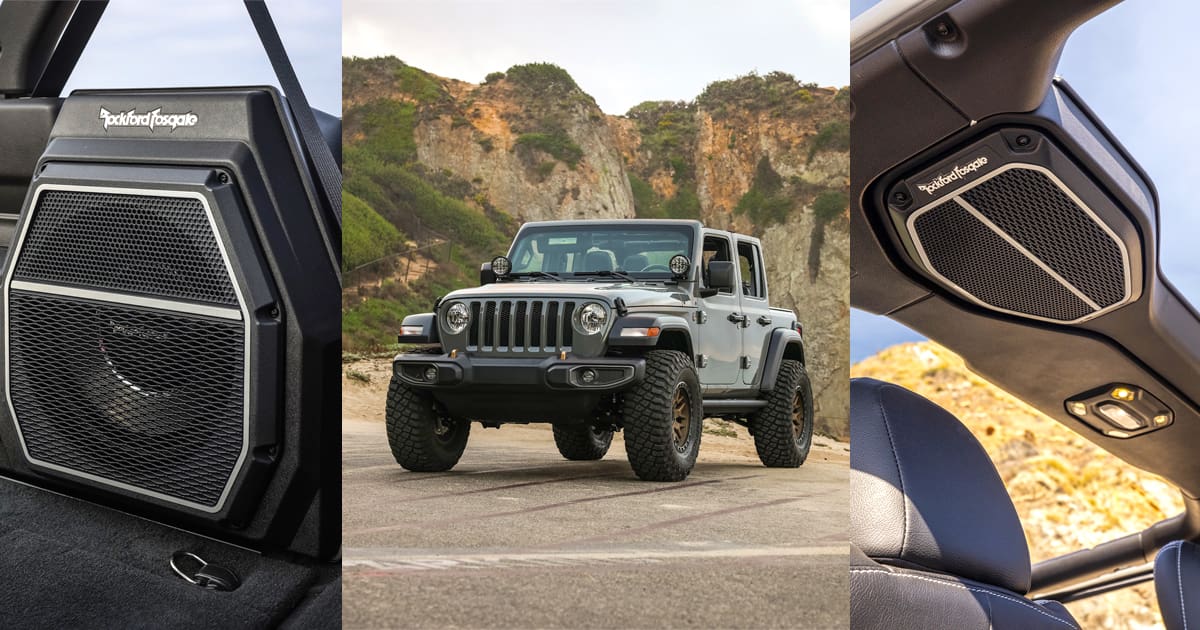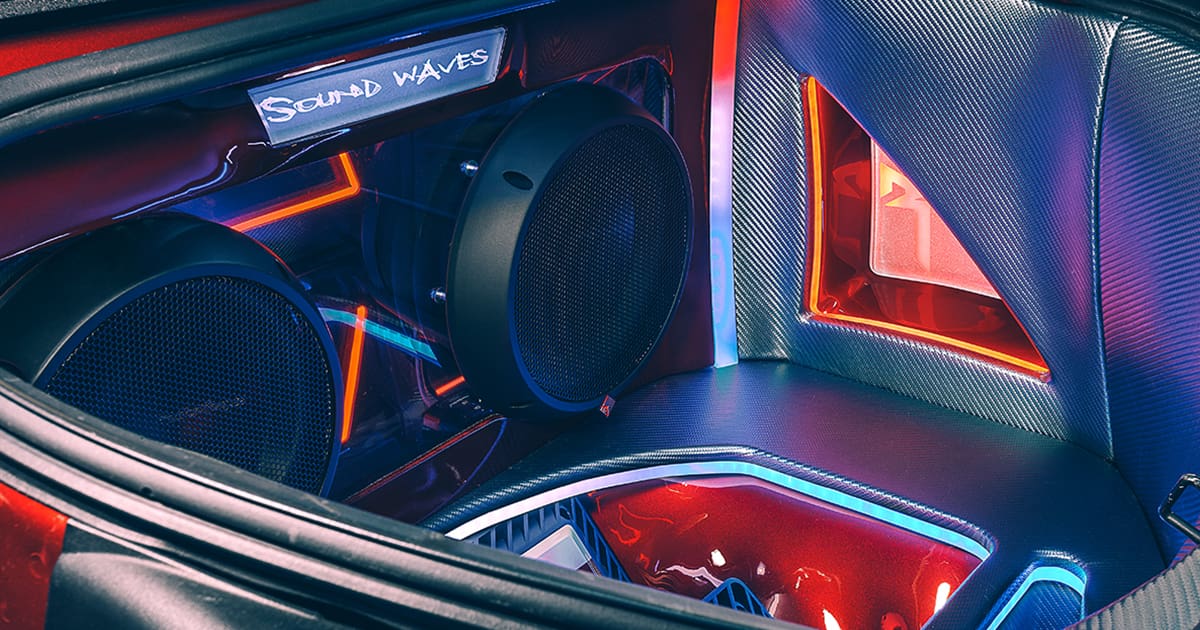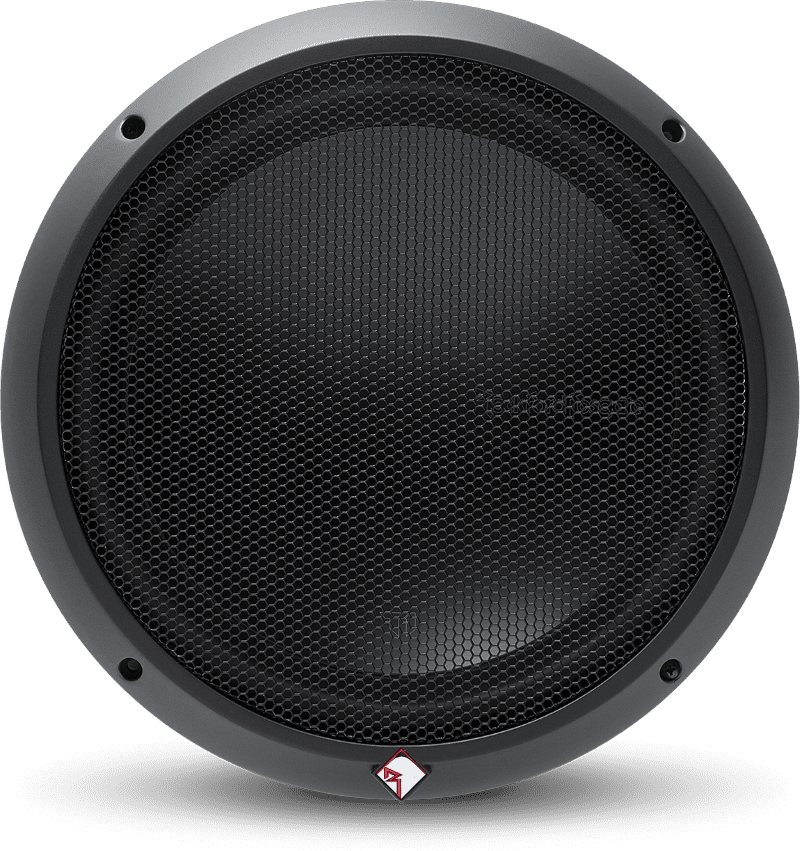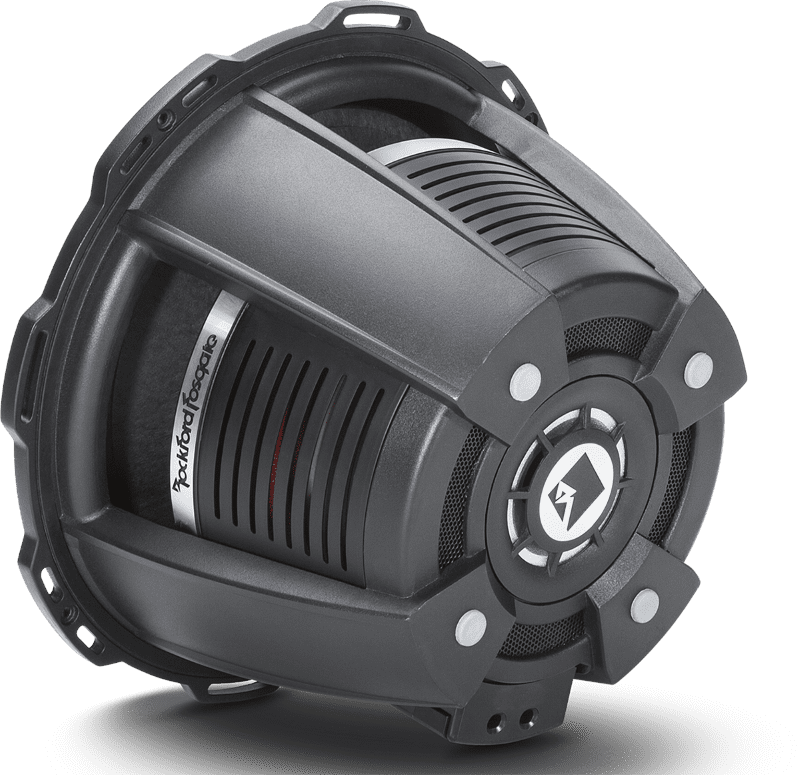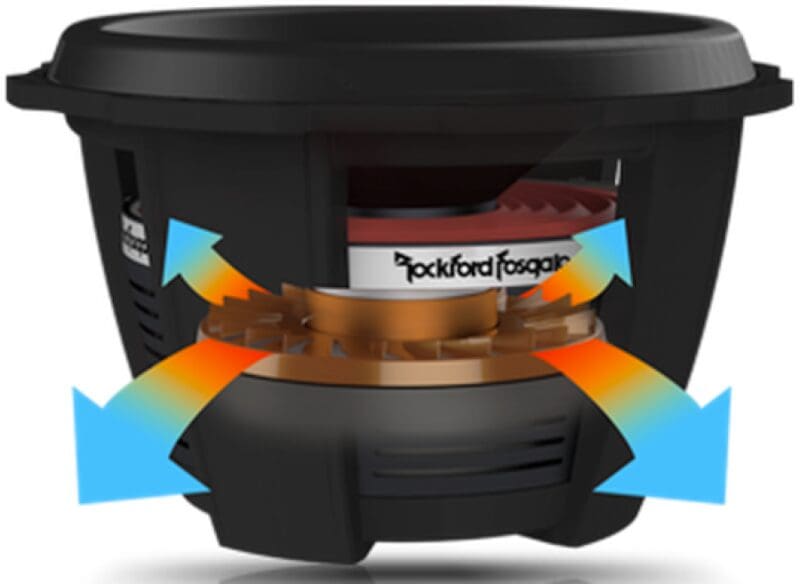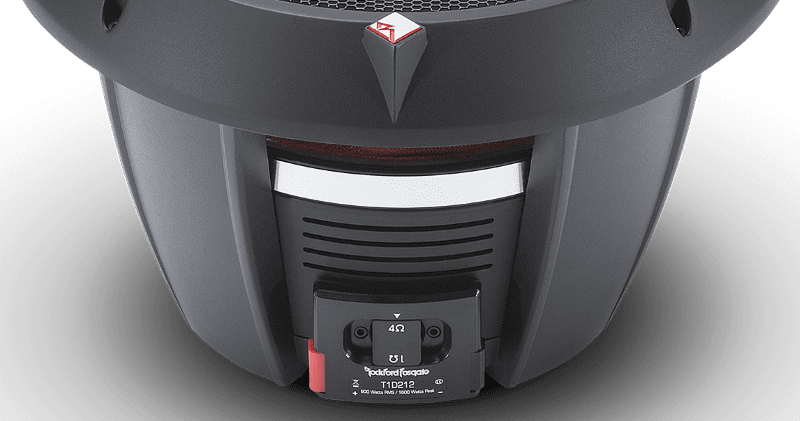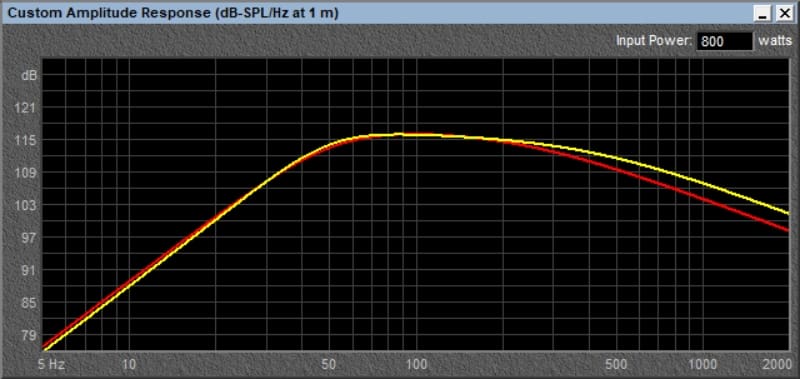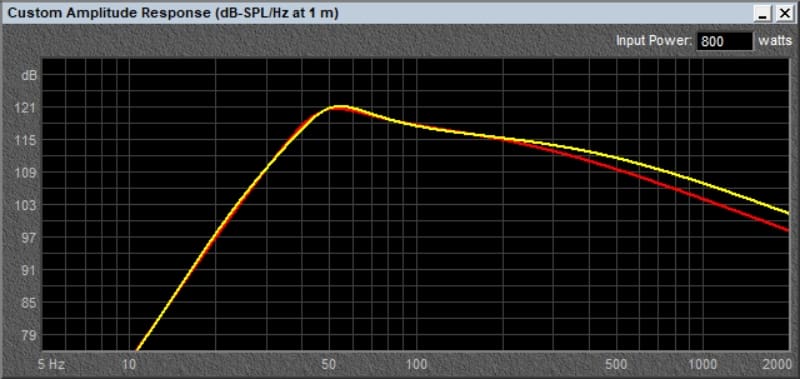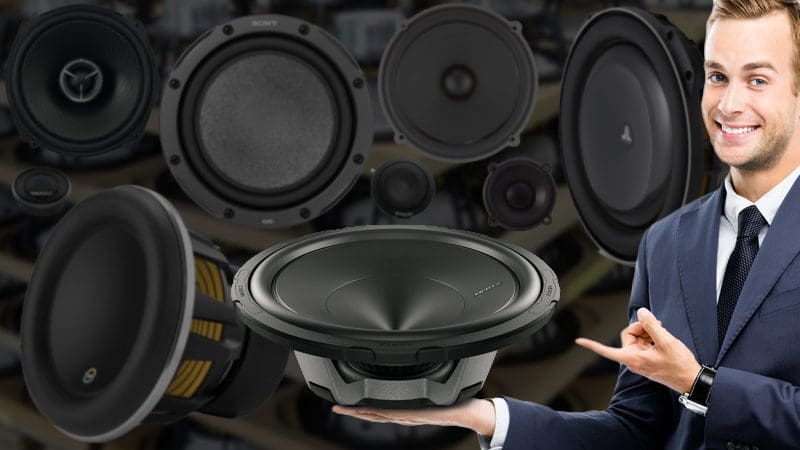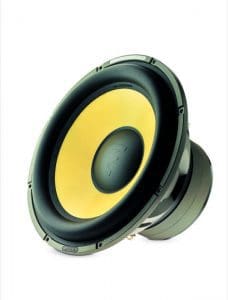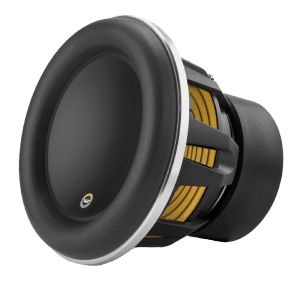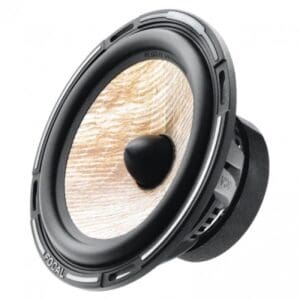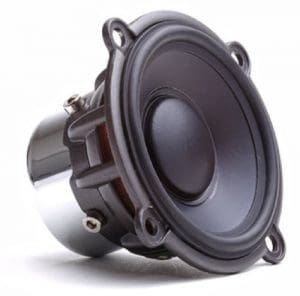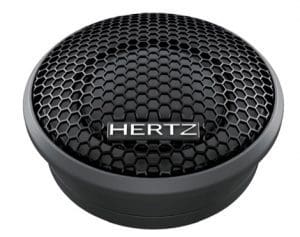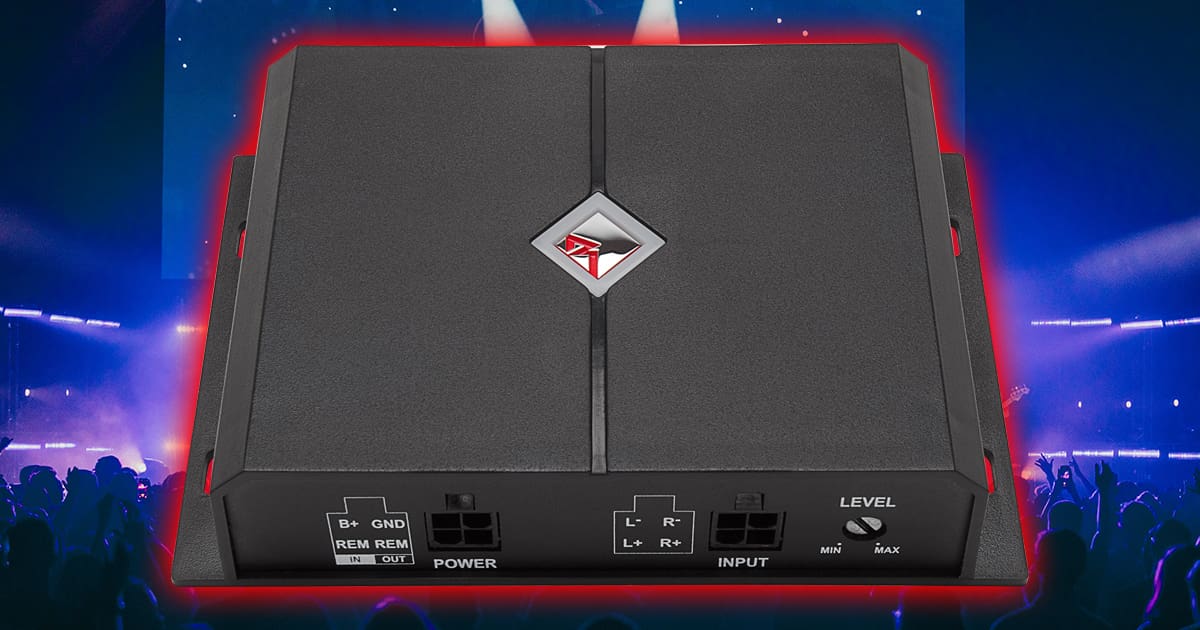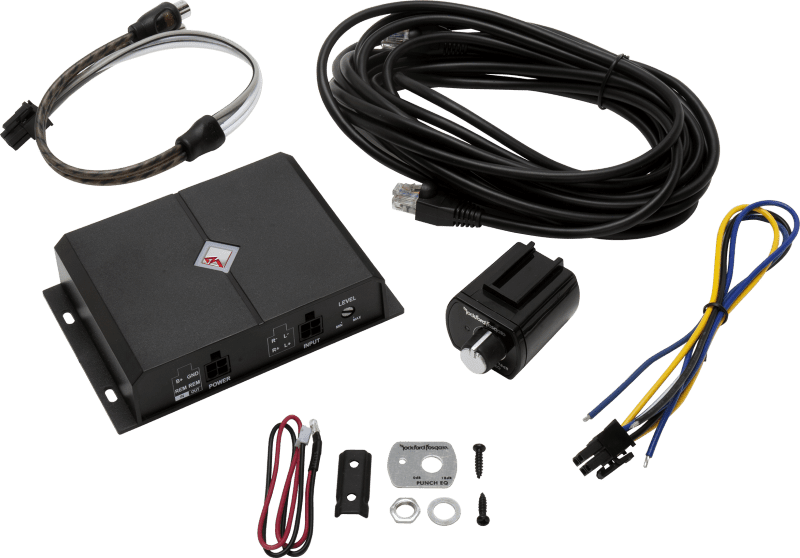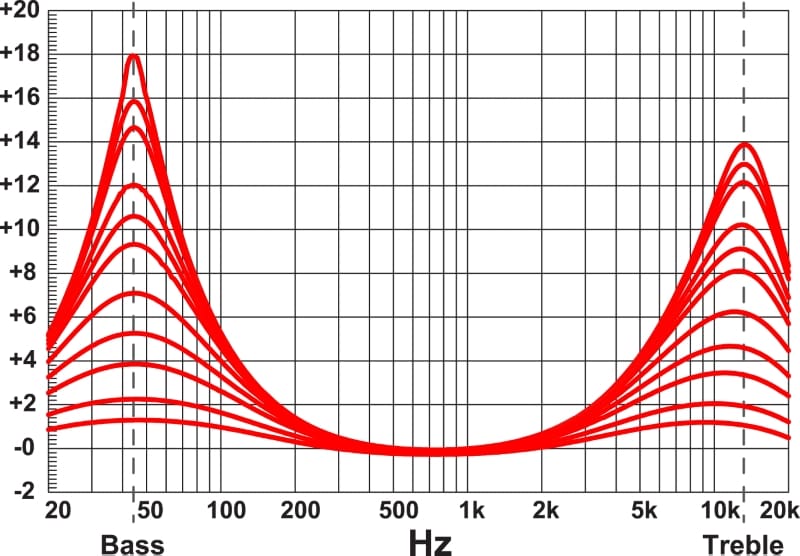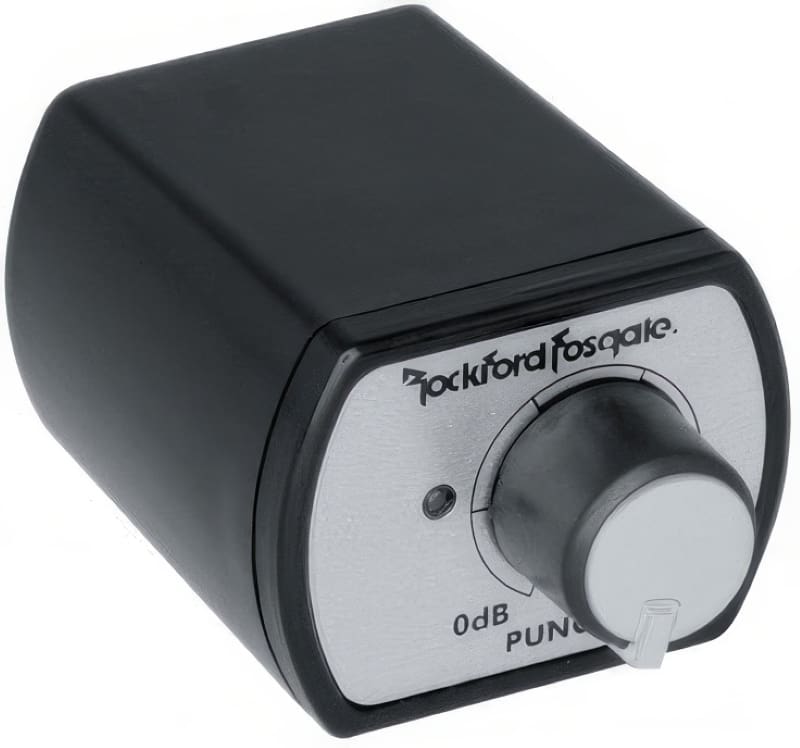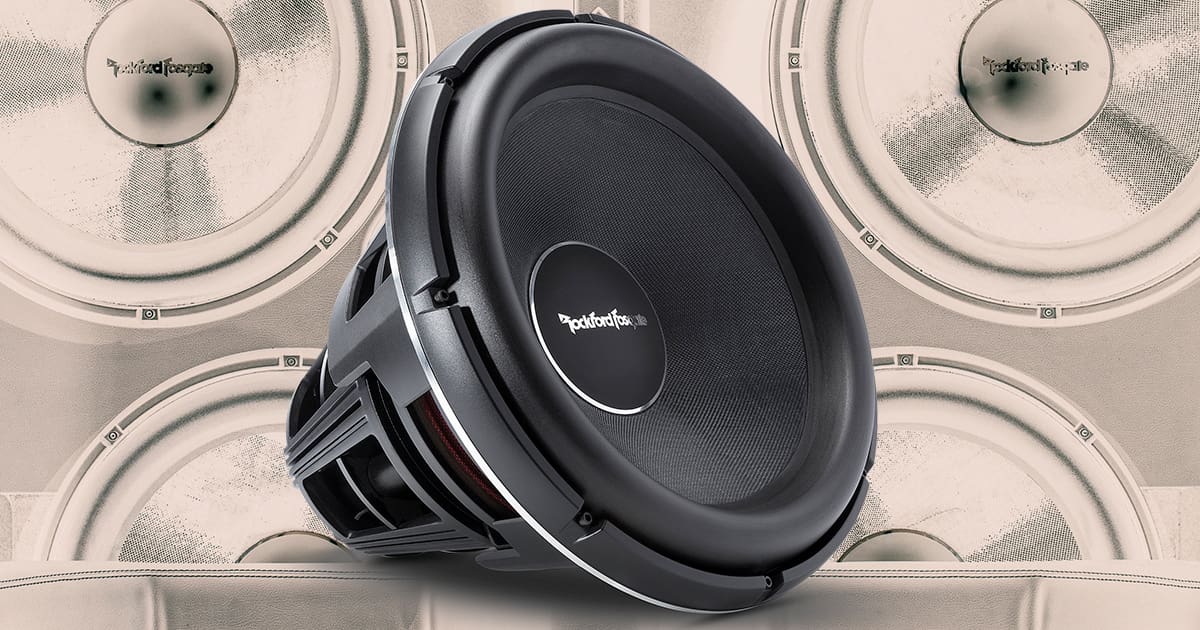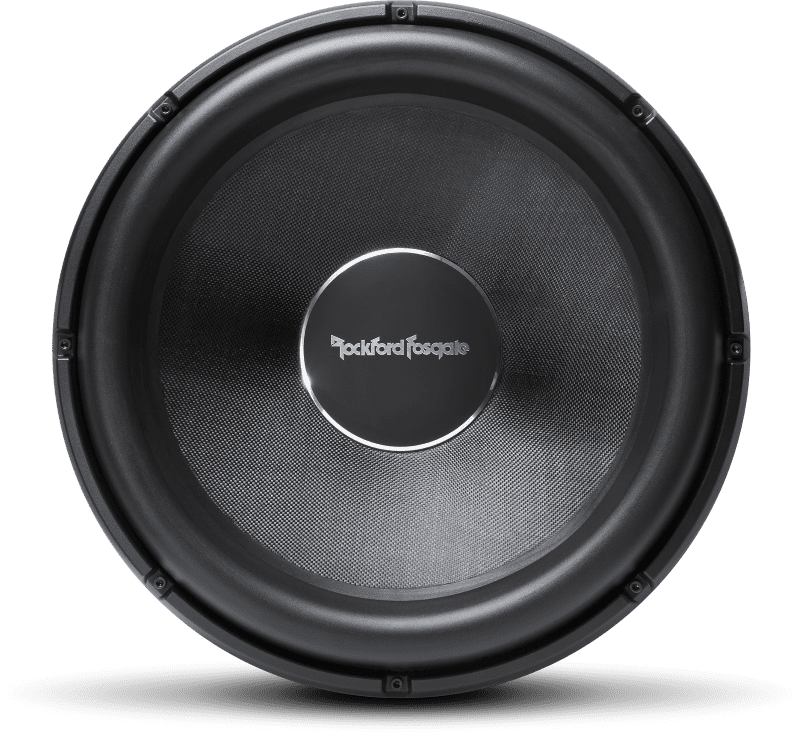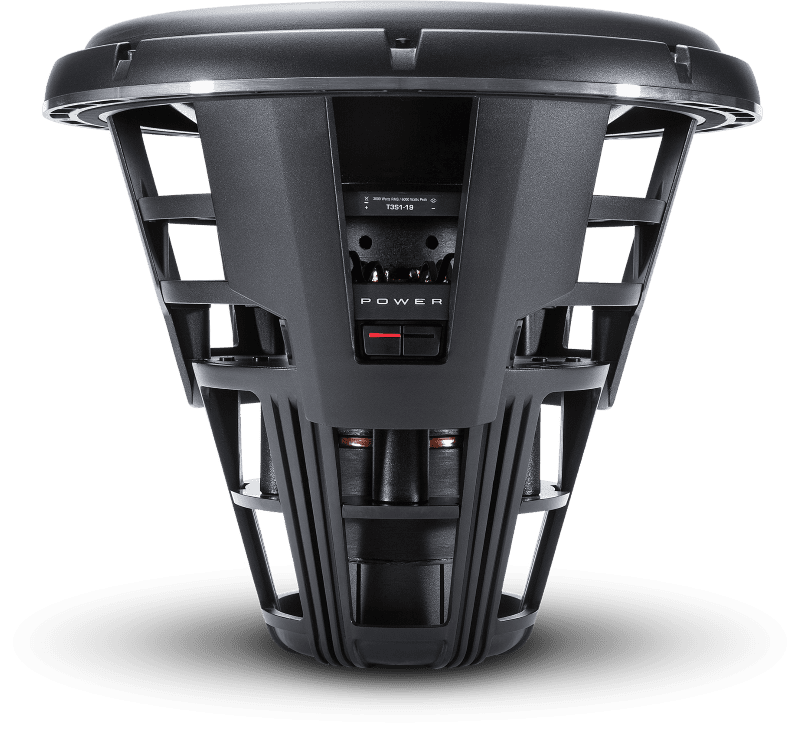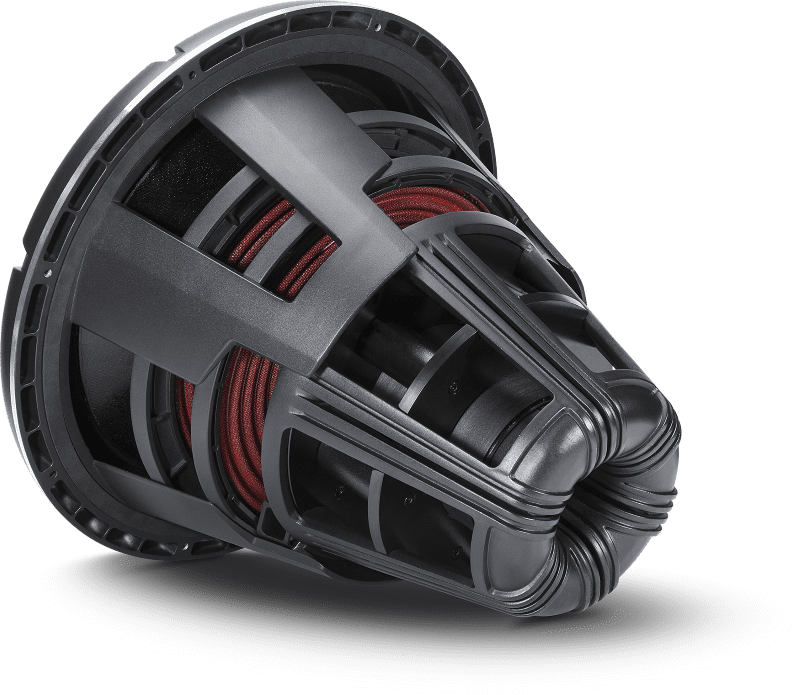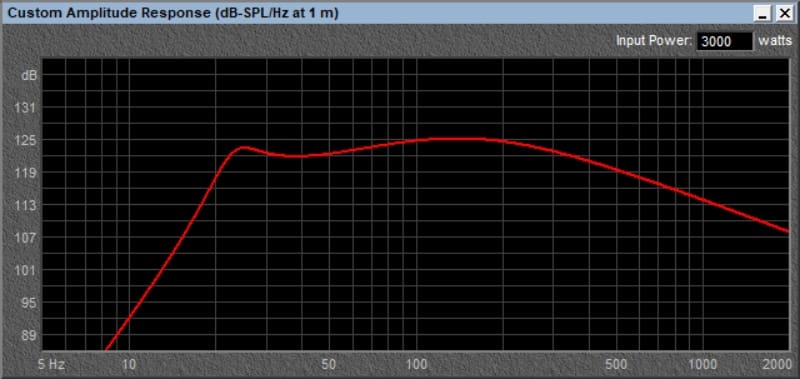Rockford Fosgate has entered the Jeep audio system upgrade market with solutions like no other. If you have a 2018 through 2023 Wrangler four-door or a 2020 or newer Gladiator, the new Stage 5, 1,800-watt all-in-one audio kits are the only premium solutions on the market. Let’s look at what makes these sound system upgrades unique.
Jeep Wrangler and Gladiator Stereo Upgrades
Let’s start with the components common to the 18WRNGLER-STG5 and 20GLADR-STG5 kits. Both kits include a pair of Element Ready Rockford Fosgate M5-series amplifiers. A four-channel M5-800X4 amplifier provides up to 100 watts of power to each front and rear speaker, and an M5-1000X1 can crank up 1,000 watts of power to the system’s subwoofers. The kit includes a mounting plate that securely locates the amplifiers under the driver’s seat.
The Wrangler and Gladiator kits include two sets of TMS65 6.5-inch Element Ready speakers in Jeep-specific enclosures. The front speaker pods are a drop-in fit for the lower part of the dash, while the rear speakers are in a new soundbar overhead enclosure. The kits also include a set of M2-TS 1-inch tweeters on mounting plates for the dash.
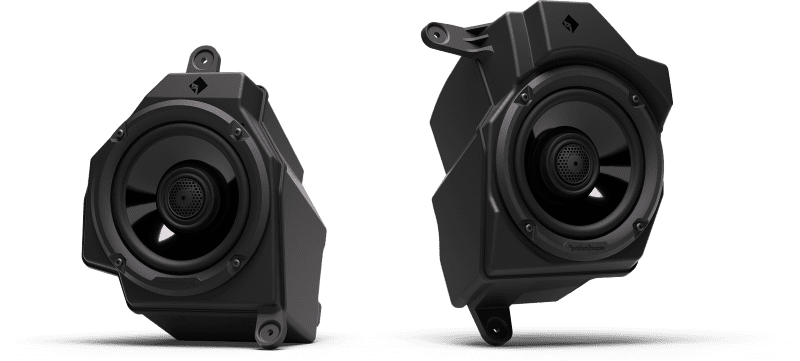
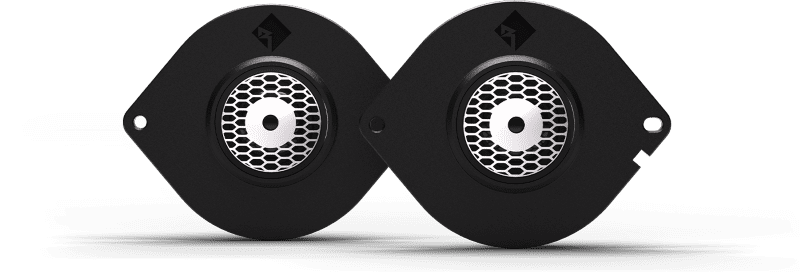
Both systems include a digital signal processor with a pre-loaded tune. The processor can detect the type of vehicle it’s installed into (Wrangler or Gladiator) and load a calibration optimized for that particular Jeep. The DSP integrates seamlessly with the factory-installed source unit and detects which radio is connected through its CAN bus communication. When combined with the Jeep-specific settings on the amplifiers, your installer doesn’t have to spend any time configuring the system, worrying about load resistors or measuring voltage or frequency response. The Rockford Fosgate R&D team has done all that work for you!
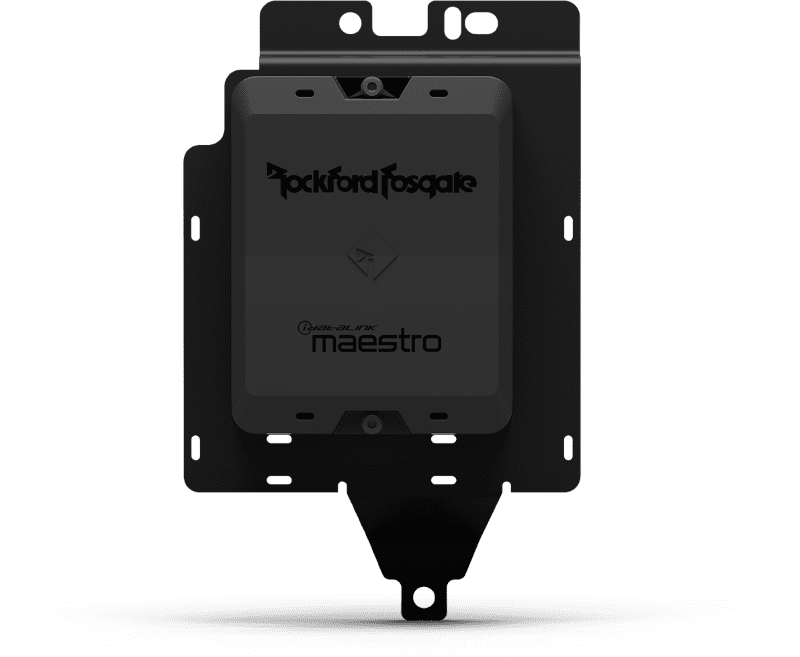
All of the upgraded components mount to the factory fastener locations. The R&D team at Rockford Fosgate 3D-scanned every part of the vehicle and created the pods, brackets, wiring and enclosures to fit perfectly with no modifications. Integration wiring features factory-style connectors and T-harnesses, so no cutting or splicing is required. Each kit has a fuse holder on a custom bracket and all the power wires for the amplifiers. Finally, a remote subwoofer level control mounts in the dash and looks like the controls on the radio. How’s that for classy?!

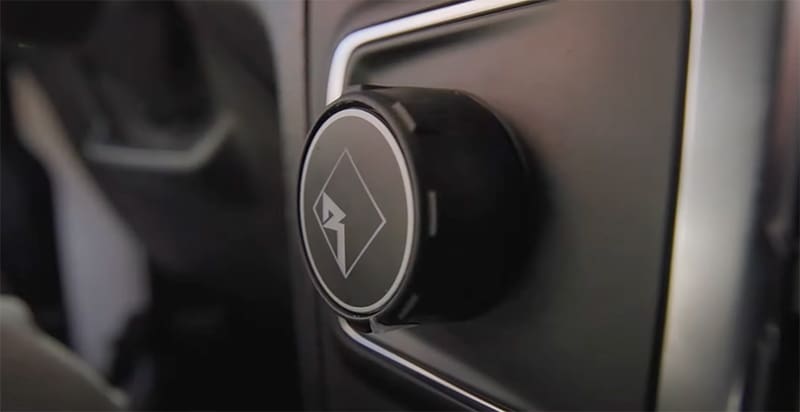
2018-2023 Jeep Wrangler Subwoofer System
Now, let’s talk about what’s unique to the 18WRNGLER-STG5 kit. This system includes a pair of subwoofer enclosures that fit by the rear windows in the cargo area of the Wrangler. Each enclosure features a T1S2-12 12-inch subwoofer. These aren’t dainty little shallow-mount subwoofers. The T1-series slimline subwoofers are top-of-the-line drivers that feature technologies like the IDHS copper cap heat-sinking shorting ring and VAST surround design. The cones are a matrix of carbon fiber, PMI and glass fiber, so you know they will sound great, even with the volume cranked!
The design of the subwoofer enclosures and the overhead soundbar match the cosmetics in the vehicle while looking cool. All enclosures feature Element Ready materials and designs, so they won’t fade from UV exposure, melt in the hot sun or crack in cold winter climates. Anyone who sees your Wrangler will know you’re serious about sound and quality at first glance.

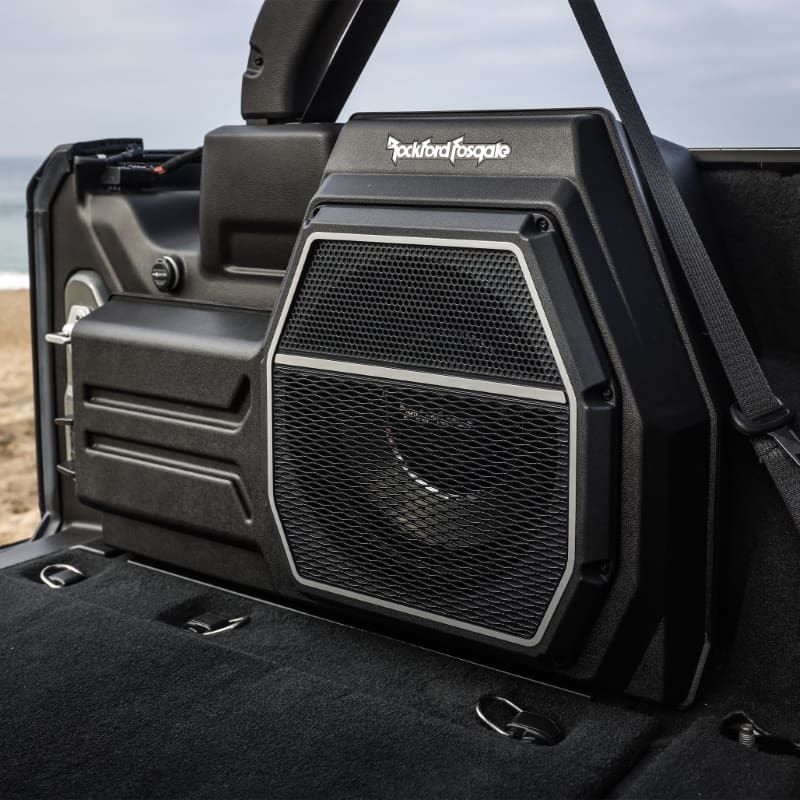
If you have a Wrangler Unlimited with the premium audio system, Rockford Fosgate created the WRNGLR-TRIM to return the cargo area to its original condition so the new subwoofers fit perfectly.
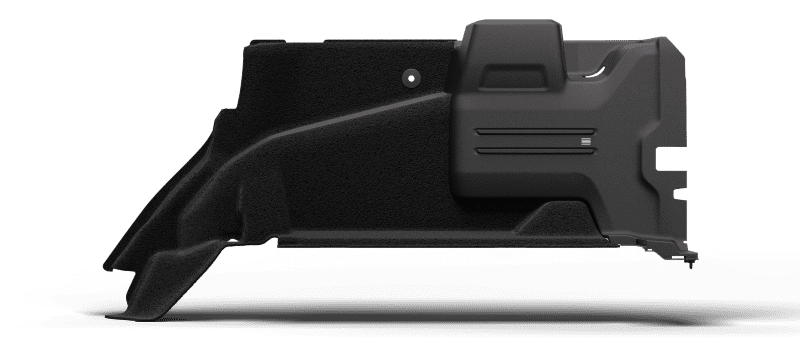
Jeep Gladiator Subwoofer System
The Rockford Fosgate subwoofer system for the Gladiator fits under the rear seat and features a pair of 10-inch T1S2-10 Power Series subwoofers. The enclosure is made from an Element Ready material that will face all the challenges you or Mother Nature can throw its way. In the enclosure, you’ll see metal inserts for mounting hardware and a spot for the OEM bolt holder. There are no worries about keeping the hardware for the doors safe. The 20GLADR-STG5 includes a jack relocation bracket behind the rear driver’s side passenger seat. The Rockford Fosgate team has indeed thought of everything!
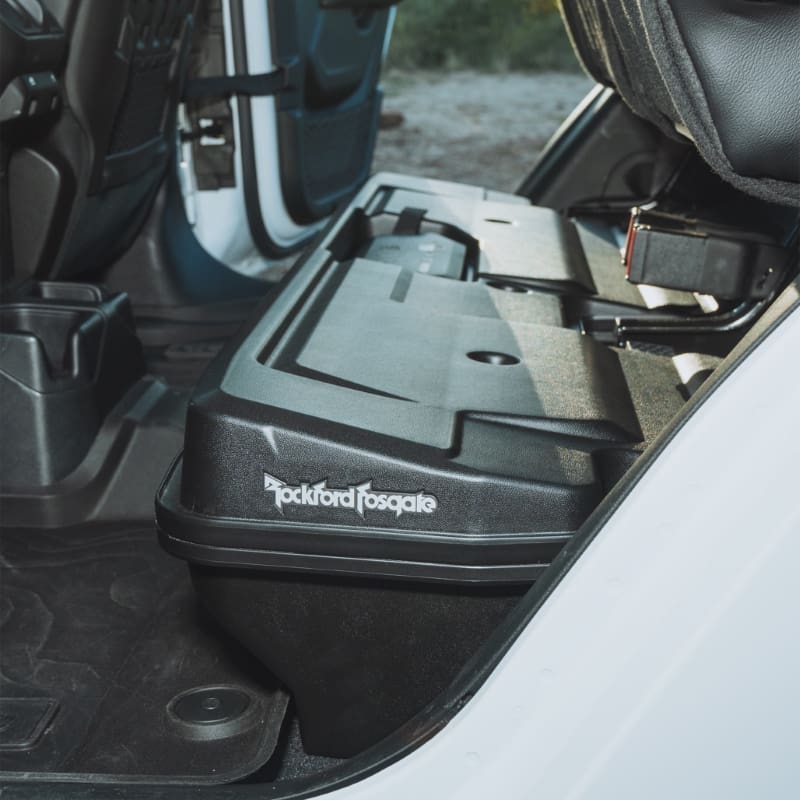
World-Class Jeep Audio System Upgrades
Whether your Wrangler or Gladiator came with the base-level sound system or the premium option, the Rockford Fosgate Jeep audio upgrade kits are perfect for people who are serious about their music. From flawless radio integration, seamless mounting and premium audio components to perfect fit and finish and professionally tuned sound, there is nothing like the 18WRNGLER-STG5 and 20GLADR-STG5 on the market. You even get your own Rockford Fosgate Jeep rubber duck with the system. We doubt you’ll give this one to a fellow Jeeper, though!

If you’re ready for serious sound in your 2018 to 2023 Wrangler four-door or 2020 or newer Gladiator, drop by a local authorized Rockford Fosgate retailer and ask about the Stage 5 Jeep audio upgrade kits. You can find an authorized retailer near you using the Dealer Locator on the website.
For more information about Rockford Fosgate audio products for your car, truck, motorcycle, side-by-side or boat, follow them on Facebook and Instagram and check out their amazing videos on YouTube.
This article is written and produced by the team at www.BestCarAudio.com. Reproduction or use of any kind is prohibited without the express written permission of 1sixty8 media.
